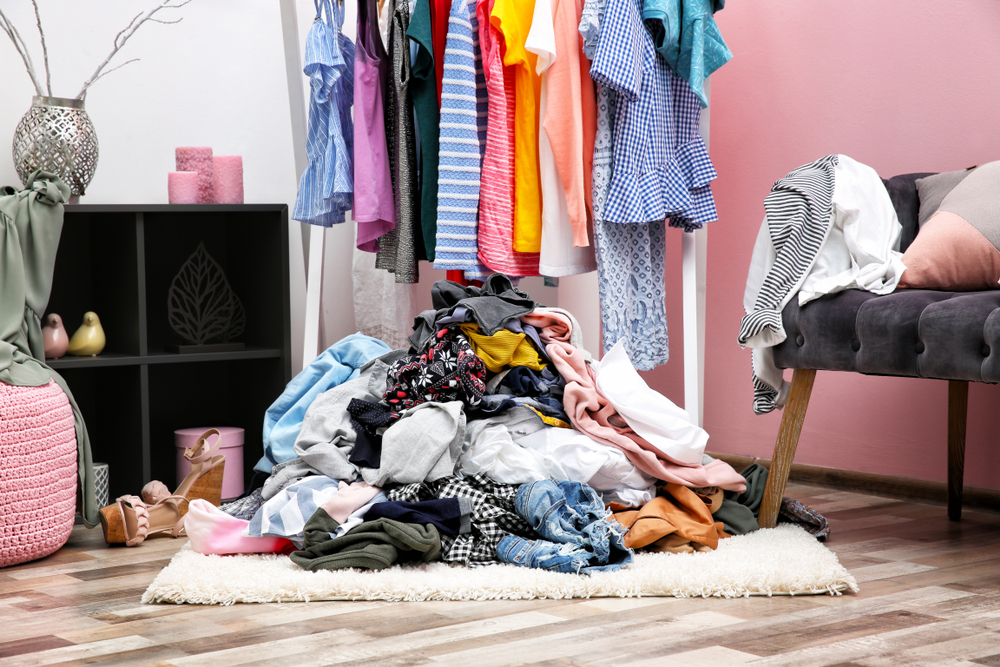How to reduce waste in the fashion Industry
Everything we buy has to end up somewhere, right? We all know waste is a problem. And yet single-use consumerism has taken hold of society, rabid for the latest styles and trends.
Not just with clothing, but accessories, decor, electronics, vehicles and more. This demand has caused manufacturers to ramp up their production, mainly through unsustainable methods consuming limited resources.
When it comes to the decline of the environment, who is the ultimate culprit? The truth is it’s a combination of factors.
Reuse
The clothing and textile industry is no innocent bystander — after oil, it’s the second largest polluter in the world, responsible for the use of contaminants like pesticides in cotton farming and toxic dyes in manufacturing. Waste like water and damaged material is also a daily by-product.
The good news is this wasteful cycle can be broken. Responsible consumers can implore others to consider all the options and choose businesses with responsible practices.
And companies can use their resources to be leaders in their industries and take steps toward real progress. Read the stories below to learn how you and others can revolutionise the practice of sustainability in the clothing and textile industry.
The textile industry requires large quantities of water, about 100 to 200 liters per kilogram of textile product. And many countries have laws and regulations with how wastewater must be treated to meet standards.
The ultimate goal for sustainability is a reduction in the amount of water used and a water treatment plan that allows for reuse.
Consumerism
One way eco-conscious companies are treating water is through a biological treatment process called MBBR (Moving Bed Bioreactor). This method requires less time and effort than other dye removal processes.
This includes traditional methods like activated sludge, coagulation and absorption. With MBRR, efficiency is the ultimate goal, with engineers continually working to cut energy consumption while reducing the need for maintenance.
Another example of water conversation in the textile industry is Gap, who partnered with BSR’s Sustainable Water Group to make sure the water that leaves their factory is free of chemicals and dyes.
Clothing labels now include a message relaying the company’s goal, claiming the water used to wash and dye jeans is treated to ensure it’s safe and clean upon leaving the factory.
While Gap was the first company to publicly communicate their implementation of sustainable conversation practices, other practicing members of BSR’s Sustainable Water Group include Levi Strauss, Nike and Coldwater Creek. Through careful research and innovation, the companies hope to promote social responsibility in consumerism.
Repair
Total implementation isn’t an overnight event. While Gap had 71 laundries who complied with the jean cleaning program by the end of 2008, that still left 19 laundries who had failed the initiative.
Corrective action plans were put in place to resolve problems that arose and develop more efficient processes. Experts agree that total implementation will take a significant amount of training, communication and investment.
One of the most common ways businesses practice sustainability is through the preservation and reuse of old materials.
Patagonia’s Worn Wear Campaign is a leading example, encouraging buyers to send in old clothing to be repaired or replaced as needed. While consumers may have been skeptical at first — who wouldn’t be? — the company held up their end of the bargain.
The Worn Wear repair factory is located in Reno, Nevada, the biggest garment repair factory in the United States. Each week, 45-full time technicians work diligently to repair the clothing Patagonia customers send in. Just two months into 2017, one team of Worn Wear seamstresses were on track to hit their 50,000th item of the year.
Shorts
The mountain-wear brand isn’t the only one focused on reuse. Looptworks, a clothing and accessory shop based in Portland, takes old clothing and materials bound for the landfill and turns it into something entirely new.
Not only can consumers purchase an item that’s one-of-a-kind, but an upcycled product translates to less waste clogging landfills.
The average American throws out 70 pounds of clothing and other textiles each year, which takes up an estimated five percent of all landfill space.
Other waste can come from the disposal of damaged, excess or unwanted clothing from manufacturers, which ends up being tossed in landfills or incinerated, releasing harmful toxins into the air. Looptworks takes this unwanted material and uses it to create a product consumers will love.
Revolutionised
Upcycling clothing doesn’t mean taking a plain white tee and adding some embellishments. Or taking a pair of pants and chopping them into shorts.
Looptworks gets creative with the process, turning unwanted leather wallets into a stylish motorcycle jacket. Discarded wetsuits can be scrapped for fabric and turned into laptop sleeves. Or belts can be cut and sewn to create stylish, unique clutches.
The evidence is clear — it’s more important than ever for businesses and consumers to spur innovative change.
Many companies have already joined the movement to reduce waste and incorporate sustainable practices. But more can be done to increase progress and create a revolutionised industry.

